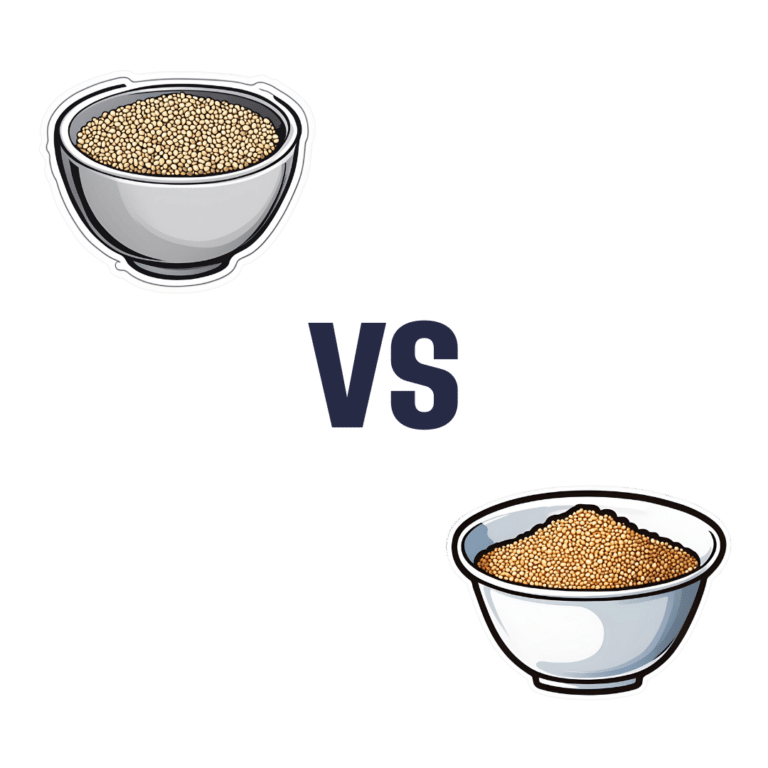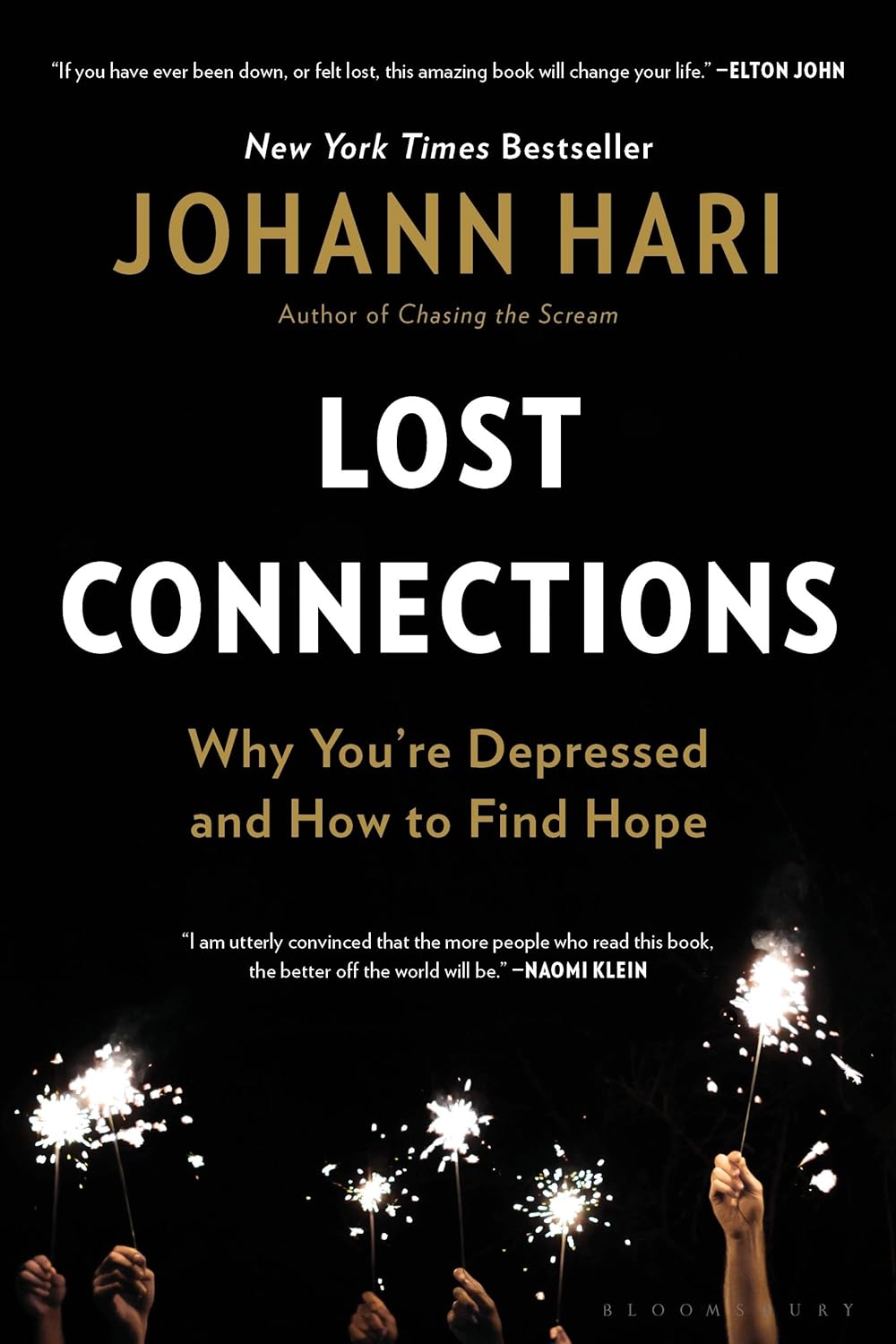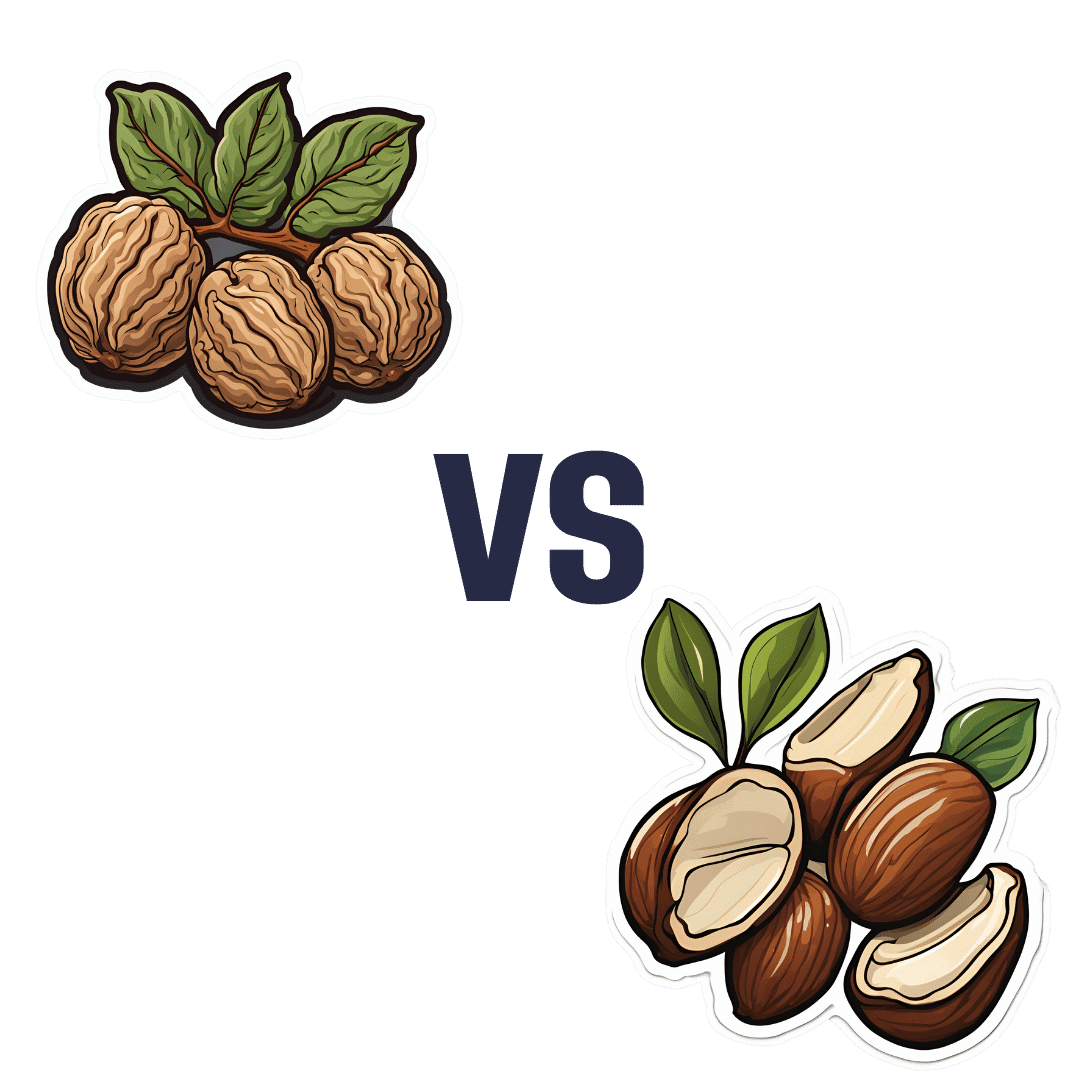
Black Tea or Green Tea – Which is Healthier?
10almonds is reader-supported. We may, at no cost to you, receive a portion of sales if you purchase a product through a link in this article.
Our Verdict
When comparing black tea to green tea, we picked the black tea.
Why?
It was close! Ultimately we picked the black tea as the “best all-rounder”.
Both teas are great for the health, insofar as tea in general is a) a very good way to hydrate (better absorption than plain water) and b) an excellent source of beneficial phytochemicals—mostly antioxidants of various kinds, but there’s a lot in there.
We did a run-down previously of the relative benefits of each of four kinds of tea (black, white, green, red):
Which Tea Is Best, By Science?
Which concluded in its final summary:
Black, white, green, and red teas all have their benefits, and ultimately the best one for you will probably be the one you enjoy drinking, and thus drink more of.
If trying to choose though, we offer the following summary:
- Black tea: best for total beneficial phytochemicals
- White tea:best for your oral health
- Green tea: best for your brain
- ❤️ Red tea: best if you want naturally caffeine-free
Enjoy!
Don’t Forget…
Did you arrive here from our newsletter? Don’t forget to return to the email to continue learning!
Recommended
Learn to Age Gracefully
Join the 98k+ American women taking control of their health & aging with our 100% free (and fun!) daily emails:
-
Lost Connections – by Johann Hari
10almonds is reader-supported. We may, at no cost to you, receive a portion of sales if you purchase a product through a link in this article.
Johann Hari had a long journey through (and out of!) depression, and shares his personal findings, including his disappointment with medical options, and a focus on the external factors that lead to depression.
And that’s key to this book—while he acknowledges later in the book that there are physiological factors involved in depression, he wants to look past things we can’t change (like genes accounting for 37% of depression) or things that there may be unwanted side-effects to changing (as in the case of antidepressants, for many people), to things we genuinely can choose.
And no, it’s not a “think yourself happy” book either; rather, it looks at nine key external factorsthat a) influence depression b) can mostly be changed.
If the book has a downside, it’s that the author does tend to extrapolate his own experience a lot more than might be ideal. If SSRIs didn’t help him, they are useless, and also the only kind of antidepressant. If getting into a green space helped him, a Londoner, someone who lives in the countryside will not be depressed in the first place. And so forth. It can also be argued that he cherry-picked data to arrive at some of his pre-decided conclusions. He also misinterprets data sometimes; which is understandable; he is after all a journalist, not a scientist.
Nevertheless, he offers a fresh perspective with a lot of ideas, and whether or not we agree with them all, new ideas tend to be worth reading. And if even one of his nine ideas helps you, that’s a win.
Bottom line: if you’d like to explore the treatment of depression from a direction other than medicalization or psychotherapy, then this is will be a good book for you.
Click here to check out Lost Connections, and reforge yours!
Share This Post
-
Undoing Creatine’s Puffiness Side Effect
10almonds is reader-supported. We may, at no cost to you, receive a portion of sales if you purchase a product through a link in this article.
It’s Q&A Day at 10almonds!
Have a question or a request? We love to hear from you!
In cases where we’ve already covered something, we might link to what we wrote before, but will always be happy to revisit any of our topics again in the future too—there’s always more to say!
As ever: if the question/request can be answered briefly, we’ll do it here in our Q&A Thursday edition. If not, we’ll make a main feature of it shortly afterwards!
So, no question/request too big or small 😎
❝Creatine is known to increase “puffiness”, especially in my face. Are there any supplements that do the opposite?!❞
So first, let’s examine why this happens: creatine is most often taken to boost muscle size and performance. Your muscles are, of course, mostly water by mass, and so building your muscles requires extra water, which triggers systemic water retention.
In other words: you take creatine, exercise, and as the muscles start growing, the body goes “oh heck, we are running out of water, better save as much as possible in order to keep hydrating the muscles without running out” and starts putting it anywhere it can that’s not your bladder, so this will largely be the soft tissues of your body.
So, this results in classic water retentions symptoms including bloating and, yes, facial puffiness.
How much this happens, and how long the effects last, depend on three main things:
- What daily dose of creatine you are taking
- What kind of exercise you are doing
- What your hydration is like
The dose is relevant as it’s most common to get this puffiness during the “loading” phase, i.e. if you’re taking an increased dose to start with.
The exercise is relevant as it affects how much your body is actually using the water to build muscles.
The hydration is relevant because the less water you are taking, the more the body will try to retain whatever you do have.
This means, of course, that the supplement you are looking for to undo the facial puffiness is, in fact, water (even, nay, especially, if you feel bloated too):
Water For Everything? Water’s Counterintuitive Properties
Additionally, you could scale back the dose of creatine you’re taking, if you’re not currently doing heavy muscle-building exercise.
That said, the recommended dose for cognitive benefits is 5g/day, which is a very standard main-phase (i.e., post-loading) bodybuilding dose, so do with that information what you will.
See also: Creatine’s Brain Benefits Increase With Age
On which note: whether or not you want to take creatine for brain benefits, however, may depend on your age:
Creatine: Very Different For Young & Old People
Most research on creatine’s effects on humans has usually been either collegiate athletes or seniors, which leaves quite a research gap in the middle—so it’s unclear at what age the muscle-building effects begin to taper off, and at what age the cognitive benefits begin to take off.
Want a quicker fix?
If you want to reduce your facial puffiness acutely (e.g., you have a date in an hour and would like to not have a puffy face), then there are two things you can do that will help immediately, and/but only have short-term effects, meaning you’d have to do them daily to enjoy the results every day:
The first is an ice bath; simply fill a large bowl with water and ice cubes, give it a couple of minutes to get down to temperature, hold your breath and plunge your face in for as long as you can comfortably hold your breath. Repeat a few times, and towel off.
This helps by waking up the vasculature in your face, helping it to reduce puffiness naturally.
The second is facial yoga or guā shā, which is the practice of physically manipulating the soft tissues of your face to put them where you want them, rather than where you don’t want them. This will work against water retention puffiness, as well as cortisol puffiness, lymphatic puffiness, and more:
7-Minute Face Fitness For Lymphatic Drainage & Youthful Jawline
Enjoy!
Share This Post
-
Cannabis & Heart Attacks
10almonds is reader-supported. We may, at no cost to you, receive a portion of sales if you purchase a product through a link in this article.
For many, cannabis use has taken the place that alcohol used to have when it comes to wanting a “downer”, that is to say, a drug that relaxes us as opposed to stimulating us.
Indeed, it is generally considered safer than alcohol ← however this is not a strong claim, because alcohol is much more dangerous than one would think given its ubiquity and (in many places, at least) social acceptability.
We’ve talked a bit about cannabis use before, in its various forms, for example:
Cannabis Myths vs Reality ← a very good starting point for the curious
And one specifically about the use of THC gummies (THC is the psychoactive compound in cannabis, i.e. it’s the chemical that gets people high, as opposed to CBD, which is not psychoactive) as a sleep aid:
Sweet Dreams Are Made of THC (Or Are They?)
And for those skipping the THC, we’ve also written about CBD use, including:
CBD Oil: What Does The Science Say? and Do CBD Gummies Work?
So, about cannabis and heart attacks
Alcohol is a relaxant, and yet it can contribute to heart disease (amongst many other things, of course):
Can We Drink To Good Health? ← this is mostly about red wine’s putative heart health benefits, how the idea got popularized, and how it doesn’t stand up to scrutiny when actually looking at the evidence.
And cannabis, another relaxant? Not so good either!
New research has shown that cannabis users have a higher risk of heart attacks, even among younger and otherwise healthy individuals. This is based on analyzing data from 4,636,628 relatively healthy adults.
Specifically, the data showed that even young healthy cannabis users get:
- Sixfold increased risk of heart attack
- Fourfold increased risk of ischemic stroke
- Threefold increased risk of cardiovascular death, heart attack, or stroke
We mention the otherwise “relatively healthy” nature of the participants, because it’s important to note that less healthy people (who were perhaps using cannabis to self-medicate for some serious condition) were not included in the dataset, as it’d skew the data unhelpfully and it’d make the risk look a lot higher than the risk levels we mentioned above.
The mechanisms by which cannabis affects heart health are not fully understood, but hypotheses include:
- Disrupting heart rhythm regulation
- Increasing oxygen demand in the heart muscle
- Causing endothelial dysfunction, which affects blood vessel function
Further, heart attack risk peaked one hour after cannabis use, and while this doesn’t prove causality, it certainly doesn’t make cannabis look safe.
You can read the paper in its entirety here:
Want a safer way to relax?
We recommend:
- No-Frills, Evidence-Based Mindfulness
- Meditation Games That You’ll Actually Enjoy
- Which Style Of Yoga Is Best For You?
- 7 Kinds Of Rest When Sleep Is Not Enough
- Better Sex = Longer Life (Here’s How)
Enjoy!
Share This Post
Related Posts
-
Celery vs Lettuce – Which is Healthier?
10almonds is reader-supported. We may, at no cost to you, receive a portion of sales if you purchase a product through a link in this article.
Our Verdict
When comparing celery to lettuce, we picked the lettuce.
Why?
Let us consider the macros first: lettuce has 2x the protein, but of course the numbers are tiny and probably nobody is eating this for the protein. Both of these salad items are roughly comparable in terms of carbs and fiber, being both mostly water with just enough other stuff to hold their shape. Nominally this section is a slight win for lettuce on account of the protein, but in realistic practical terms, it’s a tie.
In terms of vitamins, celery has more of vitamins B5 and E, while lettuce has more of vitamins A, B1, B2, B3, B6, B7, B9, C, K, and choline. An easy win for lettuce here.
In the category of minerals, celery has more calcium, copper, and potassium, while lettuce has more iron, magnesium, manganese, phosphorus, potassium, selenium, and zinc. So, a fair win for lettuce.
Adding up the sections makes for an overall win for lettuce; of course, enjoy both, though!
Want to learn more?
You might like to read:
Why You’re Probably Not Getting Enough Fiber (And How To Fix It)
Take care!
Don’t Forget…
Did you arrive here from our newsletter? Don’t forget to return to the email to continue learning!
Learn to Age Gracefully
Join the 98k+ American women taking control of their health & aging with our 100% free (and fun!) daily emails:
-
Rethinking Exercise: The Workout Paradox
10almonds is reader-supported. We may, at no cost to you, receive a portion of sales if you purchase a product through a link in this article.
The notion of running a caloric deficit (i.e., expending more calories than we consume) to reduce bodyfat is appealing in its simplicity, but… we’d say “it doesn’t actually work outside of a lab”, but honestly, it doesn’t actually work outside of a calculator.
Why?
For a start, exercise calorie costs are quite small numbers compared to metabolic base rate. Our brain alone uses a huge portion of our daily calories, and the rest of our body literally never stops doing stuff. Even if we’re lounging in bed and ostensibly not moving, on a cellular level we stay incredibly busy, and all that costs (and the currency is: calories).
Since that cost is reflected in the body’s budget per kg of bodyweight, a larger body (regardless of its composition) will require more calories than a smaller one. We say “regardless of its composition” because this is true regardless—but for what it’s worth, muscle is more “costly” to maintain than fat, which is one of several reasons why the average man requires more daily calories than the average woman, since on average men will tend to have more muscle.
And if you do exercise because you want to run out the budget so the body has to “spend” from fat stores?
Good luck, because while it may work in the very short term, the body will quickly adapt, like an accountant seeing your reckless spending and cutting back somewhere else. That’s why in all kinds of exercise except high-intensity interval training, a period of exercise will be followed by a metabolic slump, the body’s “austerity measures”, to balance the books.
You may be wondering: why is it different for HIIT? It’s because it changes things up frequently enough that the body doesn’t get a chance to adapt. To labor the financial metaphor, it involves lying to your accountant, so that the compensation is not made. Congratulations: you’re committing calorie fraud (but it’s good for the body, so hey).
That doesn’t mean other kinds of exercise are useless (or worse, necessarily counterproductive), though! Just, that we must acknowledge that other forms of exercise are great for various aspects of physical health (strengthening the body, mobilizing blood and lymph, preventing disease, enjoying mental health benefits, etc) that don’t really affect fat levels much (which are decided more in the kitchen than the gym—and even in the category of diet, it’s more about what and how and when you eat, rather than how much).
For more information on metabolic balance in the context of exercise, enjoy:
Click Here If The Embedded Video Doesn’t Load Automatically!
Want to learn more?
You might also like to read:
- Are You A Calorie-Burning Machine?
- Burn! How To Boost Your Metabolism
- How To Do HIIT (Without Wrecking Your Body)
- Lose Weight, But Healthily
- Build Muscle (Healthily!)
- How To Gain Weight (Healthily!)
Take care!
Don’t Forget…
Did you arrive here from our newsletter? Don’t forget to return to the email to continue learning!
Learn to Age Gracefully
Join the 98k+ American women taking control of their health & aging with our 100% free (and fun!) daily emails:
-
Walnuts vs Brazil Nuts – Which is Healthier?
10almonds is reader-supported. We may, at no cost to you, receive a portion of sales if you purchase a product through a link in this article.
Our Verdict
When comparing walnuts to Brazil nuts, we picked the walnuts.
Why?
Talking macros first, they are about equal in protein, carbs, fats, and fiber; their composition is almost identical in this regard. However, looking a little more closely at the fats, Brazil nuts have more than 2x the saturated fat, while walnuts have nearly 2x the polyunsaturated fat. So, we’ll declare the macros category a moderate win for walnuts.
The category of vitamins is not balanced; walnuts have more of vitamins A, B2, B3, B5, B6, B9, C, and choline, while Brazil nuts have more of vitamins B1 and E. A clear and easy win for walnuts.
The category of minerals is interesting, because of one mineral in particular. First let’s mention: walnuts have more iron and manganese, while Brazil nuts have more calcium, copper, magnesium, phosphorus, potassium, and selenium. Taken at face value, this is a clear win for Brazil nuts. However…
About that selenium… Specifically, it’s more than 391x higher, and a cup of Brazil nuts would give nearly 10,000x the recommended daily amount of selenium. Now, selenium is an essential mineral (needed for thyroid hormone production, for example), and at the RDA it’s good for good health. Your hair will be luscious and shiny. However, go much above that, and selenium toxicity becomes a thing, you may get sick, and it can cause your (luscious and shiny) hair to fall out. For this reason, it’s recommended to eat no more than 3–4 Brazil nuts per day.
There is one last consideration, and this is oxalates; walnuts are moderately high in oxalates (>50mg/100g) while Brazil nuts are very high in oxalates (>500mg/100g). This won’t affect most people at all, but if you have pre-existing kidney problems (including a history of kidney stones), you might want to go easy on oxalate-containing foods.
For most people, however, walnuts are a very healthy choice, and outshine Brazil nuts in most ways.
Want to learn more?
You might like to read:
Why You Should Diversify Your Nuts
Take care!
Don’t Forget…
Did you arrive here from our newsletter? Don’t forget to return to the email to continue learning!
Learn to Age Gracefully
Join the 98k+ American women taking control of their health & aging with our 100% free (and fun!) daily emails:







